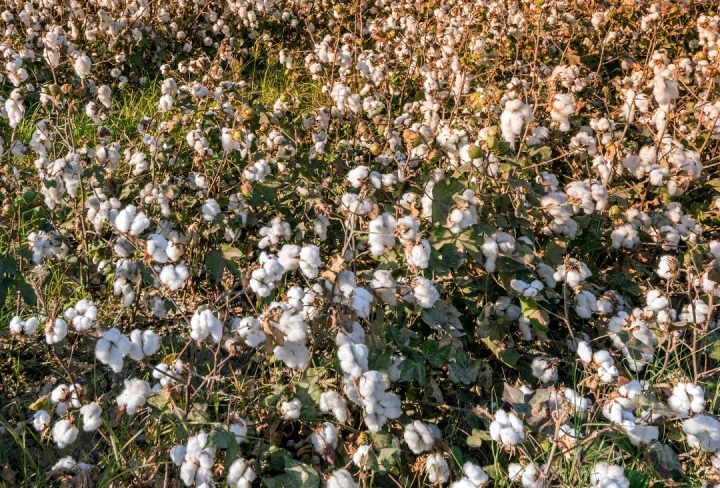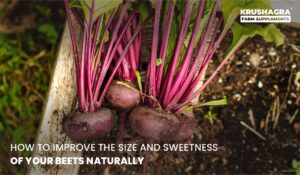Cotton is undoubtedly one of the most important cash crop and fiber crop in India, given the fact that a lot of our daily products ranging from home furnishing goods, textiles, healthcare kits to cosmetic commodities use it as a raw material. This Kharif crop is direct income source for around 6 million farmers in India coming from states like Gujarat, Maharashtra, Andhra Pradesh, Haryana, Punjab, Madhya Pradesh, Karnataka, Rajasthan, Tamil Nadu, Odisha states.
Although, India is second largest exporter of cotton after China, yet the concerns around its conventional farming practices has been highlighted time and again with the surge of sustainable development becoming a common motive across the fields.
Cotton is considered to be a chemical and water intensive crop thus requiring more pesticides for its appropriate growth. It is prone to attack from bollworms, plant bugs, stink bugs, aphids, thrips, and spider mites more often. Farmers tend to pull off the perennial crop right after the harvest due to kill these pests and plant new seeds every year. This act deprives the soil of essential nutrients and leads to more use of fertilizers, which leads to soil erosion to large extent.
To sustain the increasing demands and strike a fine balance with nature, organic farming of cotton would be highly beneficial. How? Lets know that first!
Benefits of Cultivating Organic cotton in India
Eco-friendly – As opposed to conventional practices, Organic farming involves non-chemical inputs and inoculants, and decrease pollution hazards. Use of biofertilizers and biopesticides is being promoted by State and Central Governments for the same reason since it preserves the natural equilibrium between different components of the ecosystem.
Pesticides residues in fibre may cause carcinogenic damage to users. The use of bio-rational for pest management in organic farming will prevent these effects. Krushagra Bacifit is one such farm supplement that can be used for organic crop fertilization of cotton. It can stimulate the crop’s immune system and supply essential nutrients to the soil.
Cost-effective – More use of chemical pesticides eventually makes the insects more immune and increases their resistance against the chemicals even more. This influences further use of insecticides, hence forcing more investment in sprays and a vicious cycle that goes on until one does not try a different method to attack the pests. This just gives rise to overall production cost unnecessarily.
Use of biopesticides prevents this loop and rather is more affordable as compared to chemical inoculants.The amount of water required for the crop’s sustenance substantially reduces. Moreover, with improved soil quality, the crop yields turn out to better profits as well. Organic cotton farming will demand less input costs, lower financial risk, and satisfying outcome once the soil fertility is upgraded.
Safe and healthy for Farmers – Getting exposed to pesticides frequently can cause chronic diseases like cancer, and infertility. With inclusion of organic inoculants, that possibility is absent and more secure for farmers’ health.
Sustainable practices for Cotton farming in India
One should ensure appropriate eco-system to nurture the cotton in the best possible way. This includes the selection of right soil type, soil pH, nutrition management, seed rate, irrigation techniques, and adequate use of biofertilizers, manure as well as biopesticides. Here’s a list of to-dos you should refer while doing organic farming of cotton in your area –
Ensure optimum use of bio-inoculants – Replace the chemical fertilizers with oragnic substitutes of biofertiliser and manure. Soil nutrition can be increased with help of animal manure, vermicompost, and cover crops that will bring up nutrients upwards from the deep layers of soil. Soil fertility, pH, and other measurements can be checked with regular soil tests. Farmers should protect the crops by practicing precision agriculture to reduce the unnecessary use of harmful chemicals.
Moreover, harvesting practices like crop rotation and intercropping with legumes can help in biological nutrient management in soils. Use all the crop residue and organic wastes instead of burning them.
Implement sufficient Weed management techniques – Utilize clean cotton seeds, completely decomposed compost, crop rotation, cover cropping, mulching, and practices like soil solarization. Soil solarozation involves putting a layer of transparent, airtight material on a weed-free ground so that the solar energy will heat up the field. This helps in controlling soilborne pests.
Use natural water resources thoughtfully and implement right irrigation methods – Cotton is a Kharif crop which means it is resists the hot weather conditions. The crop’s water requirements can be fulfilled with the combined practice of precipitation, irrigation, and soil moisture.
Drip irrigation method is the most recommended and also used method in India, as it needs least amount of labor work and prevents time wastage. With help of drip irrigation, it is possible to produce organic cotton in all types of soil with few water sources at place.
Water conservation technique like rainwater harvesting is also immensely help in organic farming of cotton and is largely followed in drought-prone regions where rainfall is aplenty
to aid groundwater recharge. Farmers should also take precautions to avoid excessive water consumption by the crop as otherwise it can lead to loss of virtual water through export to other countries.
Prevent the biodiversity loss – Diversifying plant species, intercropping and reducing tillage are some of the sustainable practices to avoid biodiversity loss in ecosystem of cotton crop production. Moreover, planting cover crops and trees with deep roots would be beneficial to prevent soil erosion through winds and water.
Maintaining the right soil pH level – Although black soils are most suitable for cotton production, it is adaptible to all kinds of soils including sandy soils and heavy clay, given the condition that it is water permeable. Cotton can grow sustainably in a soil with a pH of around 5.5 to 8.5.
Harvest organic cotton manually – Harvesting manually is a slow and tedious process yet it is preferred to retain most of the fiber. Organic cotton should be harvested manually on regular basis as it would be less taxing financially. Allow the cotton bolls to fully ripen and open.
Do not delay in picking the cotton bolls as it can deteriorate the fiber quality because the bolls get exposed to dust, dew, and honeydew from insects longer. Do not pick the unripe cotton.
Storage of organic cotton should be in clean and dry place – Alike other crops, cotton will require appropriate storage facility wherein it is not exposed to damp or humid conditions. It will cause fungus and lead to significant loss to fiber’s quality.
Organic cotton production will be the prominent steps towards sustainable agriculture and have a positive impact on Indian farming economy even more so. Understanding the environmental need for the same and implementing the discussed practices can help progress the already flourishing organic farming movement. Krushagra contribute’s in this forward development by providing the bio-inoculants in form of Krushagra Bacifit (biofertilizer) and Krushagra Metafit (biopesticide) in organic cotton farming and accelerate the progress of farmers and nature altogether.





